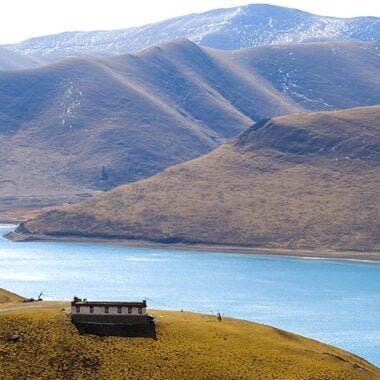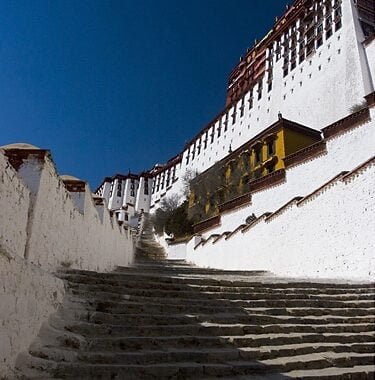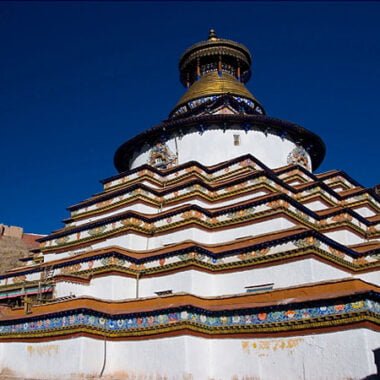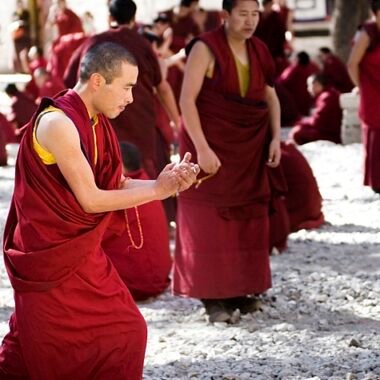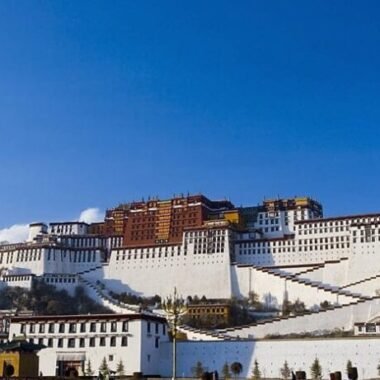Barkhor Street: A Sensory Journey Through Lhasa’s Ancient Heart
Introduction Step onto Barkhor Street , a living tapestry of devotion and commerce encircling Jokhang Temple. For over 1,300 years, pilgrims spinning prayer…
Introduction
Step onto Barkhor Street , a living tapestry of devotion and commerce encircling Jokhang Temple. For over 1,300 years, pilgrims spinning prayer wheels have mingled with merchants hawking turquoise and spices, creating a symphony of sights, smells, and sounds. Whether you seek a silver ”gau“ pendant or a steaming ”momo“ dumpling, this labyrinthine alley offers Tibet in microcosm. Here’s how to wander its cobblestones like a mindful explorer.
A Walk Through Time: Barkhor’s History & Significance
– Sacred Circuit: The street forms the kora (pilgrimage path) around Jokhang Temple. Devotees circle clockwise, murmuring mantras.
– Silk Road Legacy: Since the 7th century, traders from Nepal, India, and China bartered silk, tea, and jewels here.
– Cultural Crossroads: Tibetan nomads, Han artisans, and monks collide in a riot of colors and dialects.
Immerse Yourself: Scenes from Barkhor’s Living Theater
Dawn: Pilgrims’ Golden Hour
As sunrise gilds Jokhang’s rooftops, join the river of pilgrims. Elderly Tibetans in chubas (woolen robes) spin handheld prayer wheels, their chanted “Om Mani Padme Hum” harmonizing with the clatter of yak butter churns. Breathe in juniper incense from sidewalk censers.
Mid-Morning: Treasure Hunts in the Bazaar
Duck into cramped shops glowing with treasures:
– Turquoise & Silver: Haggle for gau lockets (amulet boxes) at Tashi’s Jewelry Stall (look for the red awning).
– Thangka Art: Peek over artists’ shoulders as they grind malachite into sacred paintings (no photos!).
– Wool Wonders: Stroke buttery-soft Tibetan carpets dyed with rhubarb root at Norlha Textiles .
Noon: Feast Like a Local
Follow the sizzle of oil to food stalls:
– Momo Dumplings: Bite into steamed pockets of yak meat or cabbage (¥10/5 pieces).
– Yak Butter Tea: Brave the salty, creamy brew at Kalsang’s Tea House – it’s an acquired taste!
– Sweet Sips: Refresh with ”cha ngamo“ (sweet milk tea) and barley sugar candies (¥5).
Afternoon: Craft Your Own Blessings
– Prayer Flag Printing: At Barkhor Print House , stamp wooden blocks with mantras onto cotton flags (¥30).
– Mani Stone Carving: Learn to etch “Om Mani Padme Hum” on slate with a local artisan (¥50, 30 mins).
Dusk: Dance with the Spirits
As twilight dims, the square near Makhye Temple erupts in spontaneous folk dances. Grinning grannies in striped aprons twirl to fiddle music – grab a hand and stumble through the steps!
Must-Buy Souvenirs & Ethical Tips
– Handmade Gifts:
– Singing Bowls: Test their hum – deeper tones mean higher bronze content (¥200–¥800).
– Chuba Pins: Silver brooches with dragon motifs (¥150).
– Tsampa Bags: Embroidered pouches for barley flour (¥40).
– Avoid:
– Antique Thangkas (often illegally sourced).
– Animal Products: Shahtoosh shawls or tiger bone trinkets.
Barkhor Street Etiquette: 7 Sacred Rules
1. Walk Clockwise: Never go against the pilgrim flow.
2. No Photos of Pilgrims: Ask permission with gestures and a smile.
3. Respect Offerings: Step over coins or rice left on the ground.
4. Haggle Gently: Start at 50% of the asking price, but don’t argue fiercely.
5. Touch with Care: Use your right hand to handle religious items.
6. Dress Modestly: Cover shoulders and knees near temples.
7. No Public Displays of Affection: Holding hands is okay; kissing isn’t.
Pro Tips for the Savvy Traveler
– Best Time to Visit: 8–10 AM (cool, fewer crowds) or 6–8 PM (magical golden light).
– Cash Only: Few stalls accept cards; carry ¥1 bills for donations.
– Stay Alert: Pickpockets target distracted tourists in tight alleys.
– Bargain Buddies: Team up with other travelers for group discounts on carpets or jewelry.
Why Barkhor Stays in Your Soul
Barkhor isn’t just a street – it’s a living lung breathing faith and commerce. One moment you’re sipping butter tea with a toothless vendor; the next, a monk presses a blessed red thread into your palm. You leave not just with souvenirs, but stories etched in yak butter and starlight.
Relevant Articles:
- Lungmar Lake Park: Lhasa’s Secret Garden for Altitude Acclimation & Serenity
- A Sacred Journey to the Potala Palace: How to Visit with Respect & Reverence
- Jokhang Temple in Tibet: History, Culture & Sacred Moments
- Discover the Majestic Attractions of Tibet

